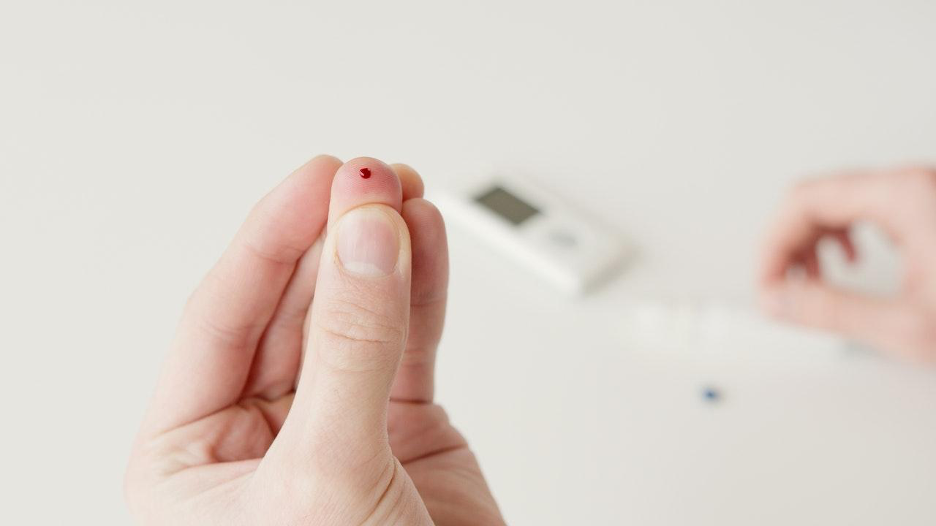Imagine the day you get your skin back to normal.
You’ve finally turned it around and have unblemished and healthy skin.
And you know it’s going to stay that way – those mysterious rashes, itches or swelling are not to be seen ever again. What a relief!
You’ve stopped reading online forums trying to find people with similar issues. You can’t believe how many hours you spent looking for a hint that could lead you onto the right path. Now you’ve finally got your time and serenity back.
No more confusion around food either. You’ve stopped wondering if it was your last meal to cause a reaction or what will happen next time you’ll eat.
You don’t wonder what is causing your skin problem anymore. Now you know. By removing the cause you eliminated the symptoms, too.
This is the feeling you get when you finally identify the cause of your skin allergy. Unfortunately, this seems like a too audacious dream for many people. They surrender to the idea of having to live with eczema, dermatitis, candida and urticaria (nettle rash or hives) and to deal with inflamed and itchy skin, localised swelling and redness.
Do you know that Australia and New Zealand have among the highest prevalence of allergic disorders in the developed world? (Source: ASCIA-Access Economics Report).
And that 4 million people in Australia reported avoiding a food type because of allergy or intolerance? Of those, about 560,000 were children aged between two and eighteen (Source: Australian Bureau of Statistics).
Most of these people get prescribed drugs, antihistamines and steroids, and accept to take them for life. The issue is that these remedies only treat the symptoms, not the cause, and leave the patient dealing with side effects, as we’ll discuss later in this article.
In truth, understanding what triggers those skin reactions and finding a solution IS possible.
In this blog post, I want to discuss a potential cause for your skin problem: food intolerances. I also zero in on a condition often overlooked: histamine intolerance.
Most importantly, I’ll show you how you can easily identify if your skin condition is caused by a food intolerance – it only takes 11 simple questions.
You can then go deeper by taking a clinical test that will identify the culprit, so you can remove it from your life, and say goodbye to your skin problems for good!

Image by Jamie Street on Unsplash
The Difference Between a Food Allergy and a Food Intolerance
What’s an Allergy?
An allergy is a hyper-sensitive immune response to a foreign substance. Typically for example people can suffer from external environmental allergies to dust mites, bee stings, pollen, nickel, moulds and medications.
The immune system may respond to a foreign substance (allergen) by producing different levels of antibodies in the blood. Symptoms of an allergy can start occurring within a few seconds (of ingestion or exposure to), or within a few hours of eating a ‘trigger’ food.
What Causes Allergic Reactions?
There can be an atopic genetic tendency in some families, where the parents may pass on this trait, however much can be done even in these individuals.
Allergies are brought about by exposure to certain allergens.
The most common foods to cause allergic reactions are:
- Milk
- Eggs
- Wheat
- Shellfish
- Fish
- Peanuts
There are different ways an allergen can enter the body and create an allergic response:
- Contact topically through the skin
- Inhalation by the lungs
- Digestion via swallowing
- Artificially e.g. injections into the bloodstream via vaccinations or medications – some of them contain dairy or eggs.
What are the Symptoms of Allergies?
Symptoms may include difficulty breathing, swelling of the throat, puffy eyes, tingling in the mouth, swelling of the lips, gurgling of the stomach, flatulence or skin rashes.
These symptoms can be extreme and sometimes, life threatening allergic attacks (anaphylaxis)
Usually, if you have a food allergy, you know about it!
What is a Food Intolerance?
Compared to a food allergy, a food intolerance provokes less extreme reactions and its symptoms are often limited to the digestive system and skin.
Also called a food sensitivity, it is a chemical reaction that happens to some people after they eat or drink certain foods over a longer period of time; not an immediate immune reaction.
Food intolerances slowly build up in the body, rather than causing a quick reaction as an allergy does. That’s why it can sometimes go unnoticed. For example, you may not make a connection between a symptom, like a rash, and a particular food you’ve eaten (especially if you’ve just eaten 1, 2 or 3 foods in one meal that your blood is reacting to – unbeknown to you).
Whilst certain foods are ‘the usual suspects’ (dairy, gluten, soy, etc.), intolerances can be caused by virtually any type of food. It depends on the person. Recently I had a patient who was highly sensitive to bananas (which he loved and ate often).
It is important to note here that, since intolerances are often associated with digestive issues, people rarely realise they may cause their skin condition as well.
Most people might not even realise they have a food intolerance! However, as I’ve seen countless times in my practice, foods we are intolerant to can often trigger skin reactions.
What are the Symptoms of a Food Intolerance?
Symptoms of sensitivity or intolerance to certain foods can include hives, stomach pains, diarrhoea, headaches, aches, pains and flu-like symptoms.
In children, the chemicals may cause them to become hyperactive and impede their learning, as well as slow their growth.
But intolerances can also cause skin reactions like rosacea, acne, eczema and psoriasis.
What is a Histamine Intolerance?
Histamine is a natural amino acid commonly found in fermented or aged food and beverages. Histamine is also naturally produced in the body and is used to signal immune activity.
Signs and symptoms of histamine intolerance may have similar features to allergic symptoms including hay fever, skin rashes, asthma, nausea, vomiting, diarrhoea, headaches and fatigue.
The symptoms are proportional to the amount of histamines consumed.
For example, someone who has consumed a significant amount of histamine-rich foods over a short period may experience symptoms within minutes of consumption. However, a person who has ingested smaller amounts of histamine over a longer period may experience symptoms several hours after eating.

Photo by Alexy Almond on Pexel
Common Food Sources of Histamine
Histamine is found in concentrated amounts in the following foods:
- Aged and mouldy cheeses
- Aged fish products, including smoked fish
- Preserved meats, e.g. packaged meats, smoked meats, ham, salami
- Berries and grapes
- Citrus fruits
- Cocoa
- Kombucha
- Spinach
- Eggs
- Tomatoes
- Mushrooms
- Vinegar (and vinegar-containing foods, such as pickles)
- Yoghurt
- Yeast-containing products
- Dried fruits
Alcohol also contains histamine AND alcohol worsens histamine intolerance symptoms because of its ability to block the metabolism of histamine. That is especially the case with beer, wine, champagne and liquor.
Common Treatments for Skin Allergy: Synthetic Drugs
Taking a synthetic drug or pill is not the solution to skin conditions. Drugs only suppress symptoms and give a person a false sense of security.
Skin rashes may be treated with creams, which provide only temporary relief. But it is only ‘symptomatic’ treatment. In fact, most skin sufferers are quite frustrated with this approach.
The two primary choices of drugs for skin problems are antihistamines and steroids. They act by suppressing the immune system.
Both can suppress a skin rash quickly, steroids sometimes for a few weeks at a time.
However, when the drugs wear off, the rash rears its ugly head again and will continue to do so until the person discovers the systemic cause and deals with it holistically.
Antihistamines
Antihistamines are generally quite safe. However, some can cause major drowsiness and brain fog and should never be taken when driving or in situations in which you need to be alert.
Being a synthetic medicine, it needs to be metabolised by the liver, which is already overloaded with the many toxins we come in contact with daily. Prolonged use of synthetic medication can aggravate the likelihood of damaging the liver. For this reason, I do not recommend using antihistamines long-term.
Vitamin C is an excellent natural antihistamine and, when given at the correct dose, is a very effective alternative to the drug. Always consult your naturopath for the correct dose.
Steroids
Steroids can be used in cream (cortisone) or tablet form. Unfortunately, they have many side effects such as weight gain, bruising, thinner skin, redness, swelling, rashes, fluid retention, infertility and osteoporosis, especially when taken long-term. Steroids do not address the root cause of the problem and are not a cure.

Photo by Moose from Pexels
The Proper Solution
Based on my experience, a fundamental step in treating skin allergies is to identify the foods you’re sensitive to and remove them from your diet for three months. Then these foods can be progressively re-introduced one at a time while monitoring the skin.
During this period, it is important to heal the gut and improve digestion so that the reactive foods can be reintroduced back into the diet again without skin flare-ups or other consequences.
Yes, you got that right; you don’t have to stay away from reactive foods forever. Certain foods might only provoke a moderate sensitivity – if that’s the case, they can be eaten a couple of times a week.
Skin allergies and food intolerances are not a life sentence!
Want an easy way to find out if your skin condition is caused by food intolerance?
Simply answer the 11 questions below.
11 Questions to Find Out if You Have Food Intolerances
- Do you crave a particular food? It’s been found that 50-60% of patients crave the substance they are intolerant to
- After eating, do you suffer from tiredness, headaches, irritability, skin itchiness, diarrhoea or bloating?
- Do you blush easily with or without stress, or become hot and flushed for no apparent reason?
- Does your skin itch so that you scratch so hard it bleeds or causes red welts?
- Do you have puffy eyes, bloodshot eyes, or dark circles under the eyes?
- Is your throat often itchy?
- Does one or both of your parents have an allergy?
- Do you suffer from asthma, hay fever, sinus problems or frequent colds?
- Do you suffer from excessive sweating for no apparent reason?
- Do you have any swelling or pain in the joints?
- Do you feel dissatisfied if you don’t eat sweets after meals?
If you answered YES to 3 or more of those questions, your skin condition is highly likely to be caused by some type of food intolerance.
Now, you might wonder what foods exactly you are intolerant to. The most accurate way to find out is to take a Food Sensitivity Blood Test.

Photo by Artem Podrez from Pexel
Food Sensitivity (IgG) Blood Test
IgG-mediated food sensitivity reactions may take several hours or days to appear. They can be the result of poor digestion, intestinal permeability (e.g. leaky gut), histamine-releasing effects, enzyme deficiency and side effects from pharmaceutical drugs.
This easy blood finger-prick test helps you find out what foods (usually it’s more than one) you’re sensitive to and to what degree: mild, moderate or severe reactivity of antibodies.
It is conducted by screening the blood sample for IgG antibodies against a list of up to 144 different foods.
This test also comes with a “Vegetarian Panel”, for those who don’t want their blood tested against animal tissues.
Once the offending foods are removed from the diet, inflammation and other symptoms – including skin symptoms – will stop occurring. And you will finally have your skin back!
Book Your IgG 144 Food Intolerance Test Here
Now you can also:
- Receive the IgG Test Kit and do it yourself from the comfort of your own home. – Order Here
- Book an Appointment to have the Test performed personally on you in Clinic.

